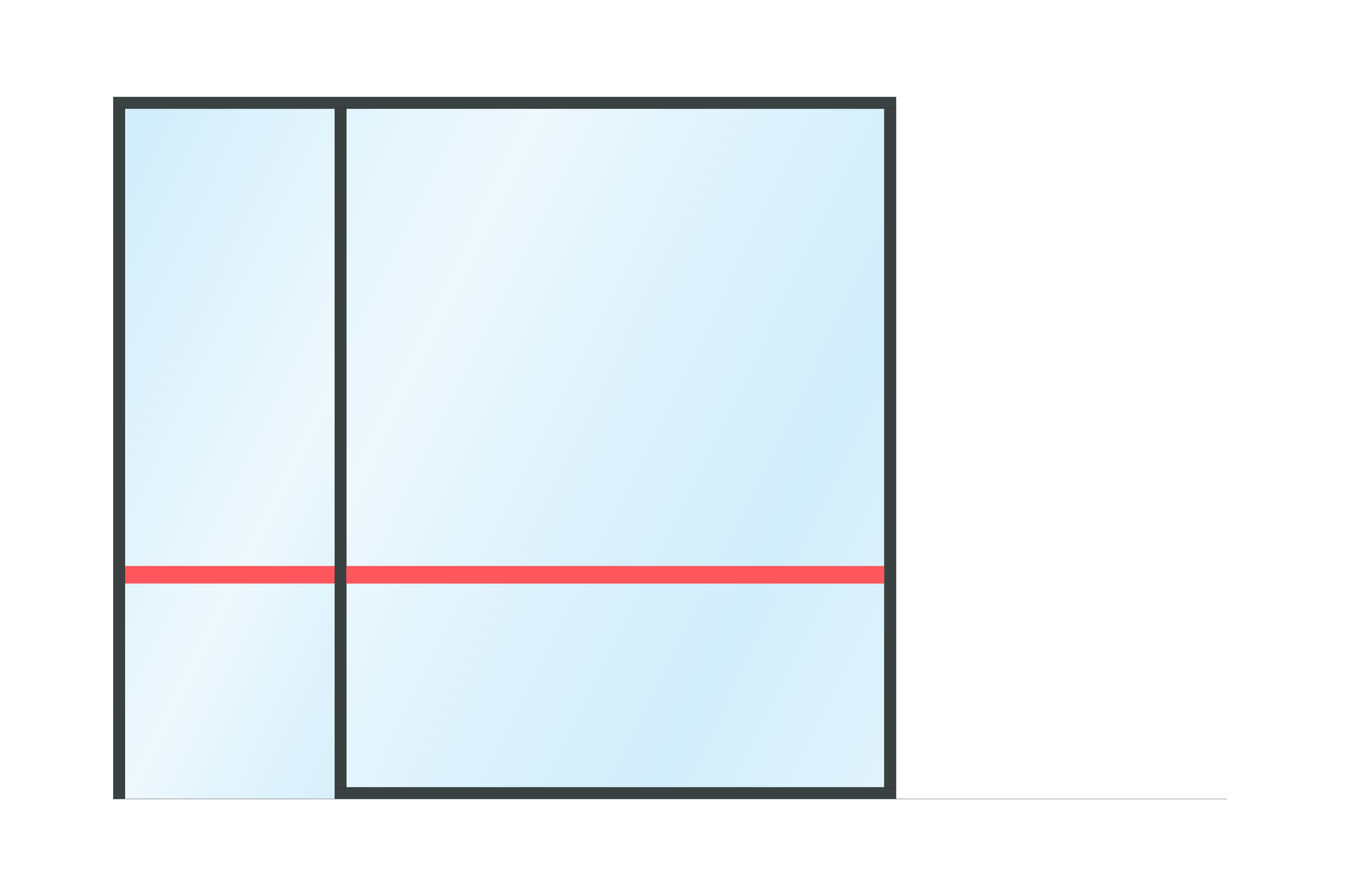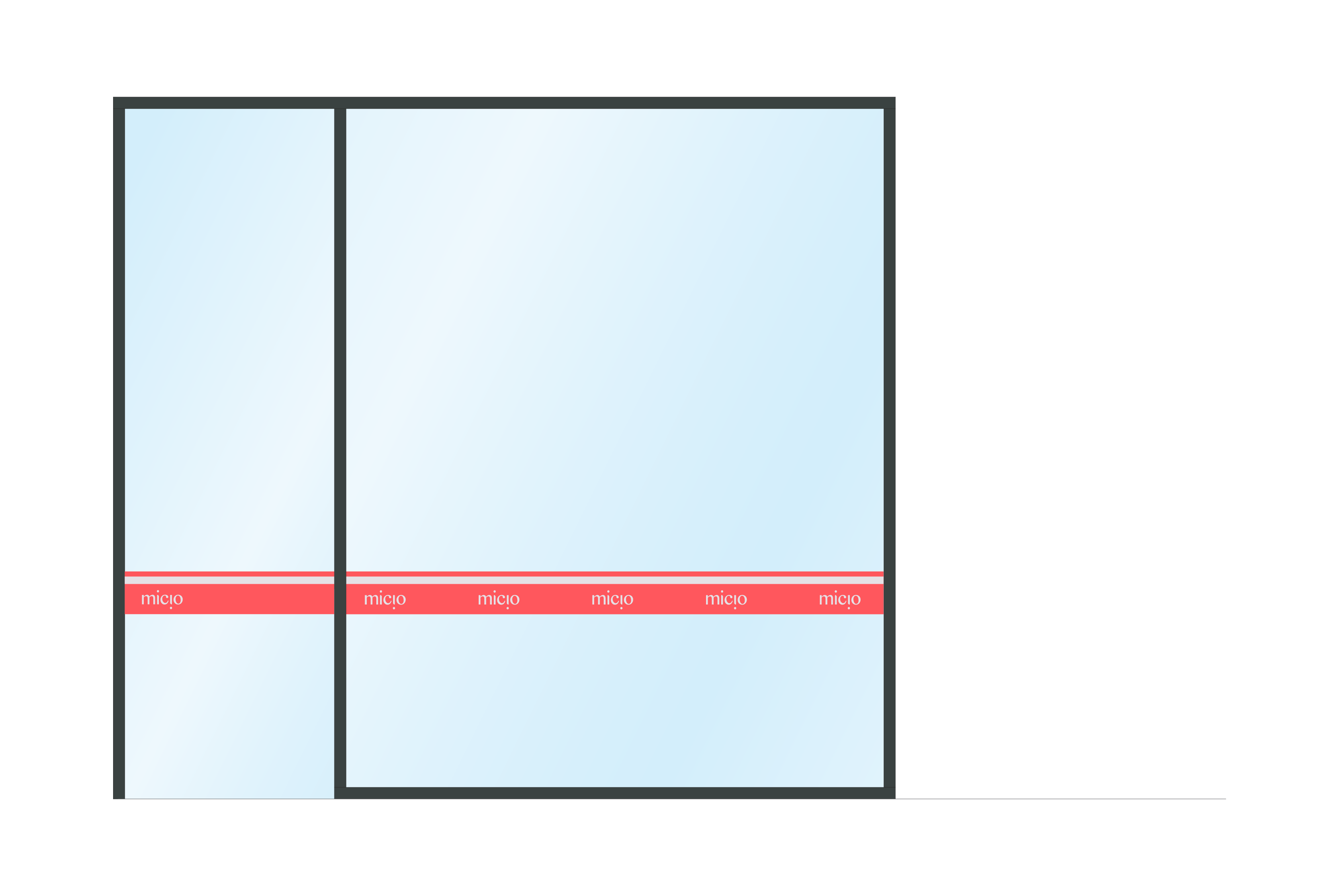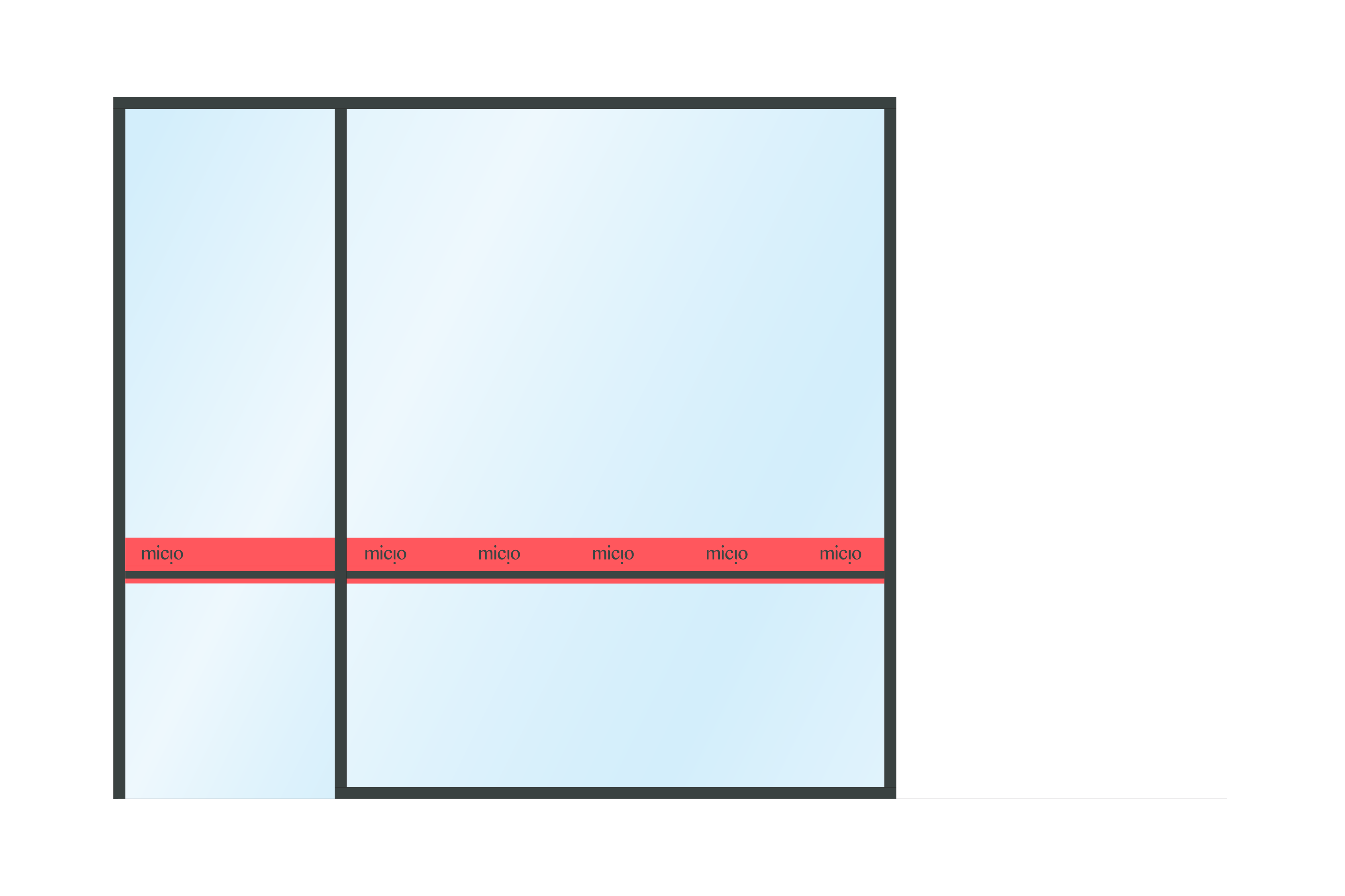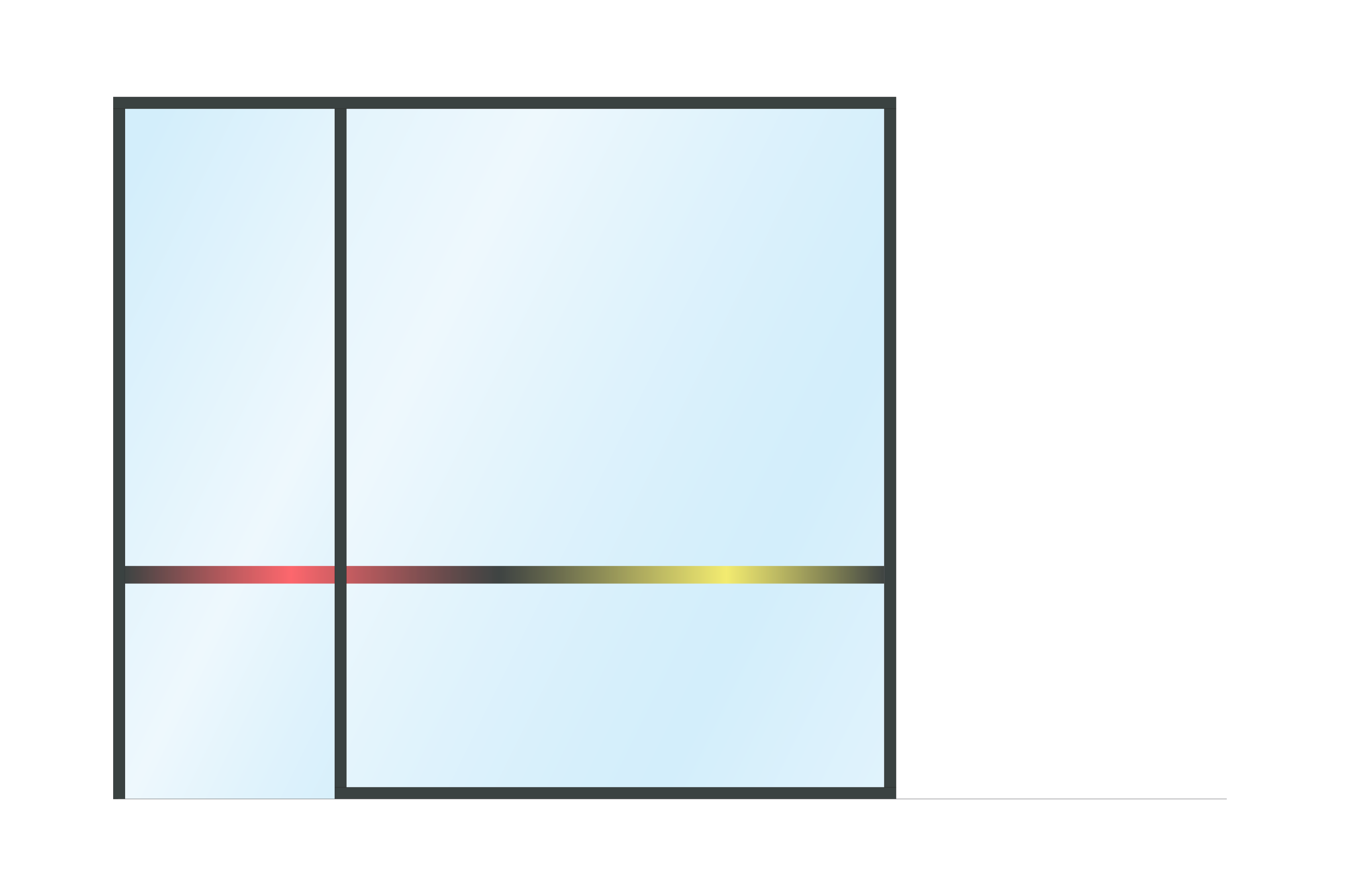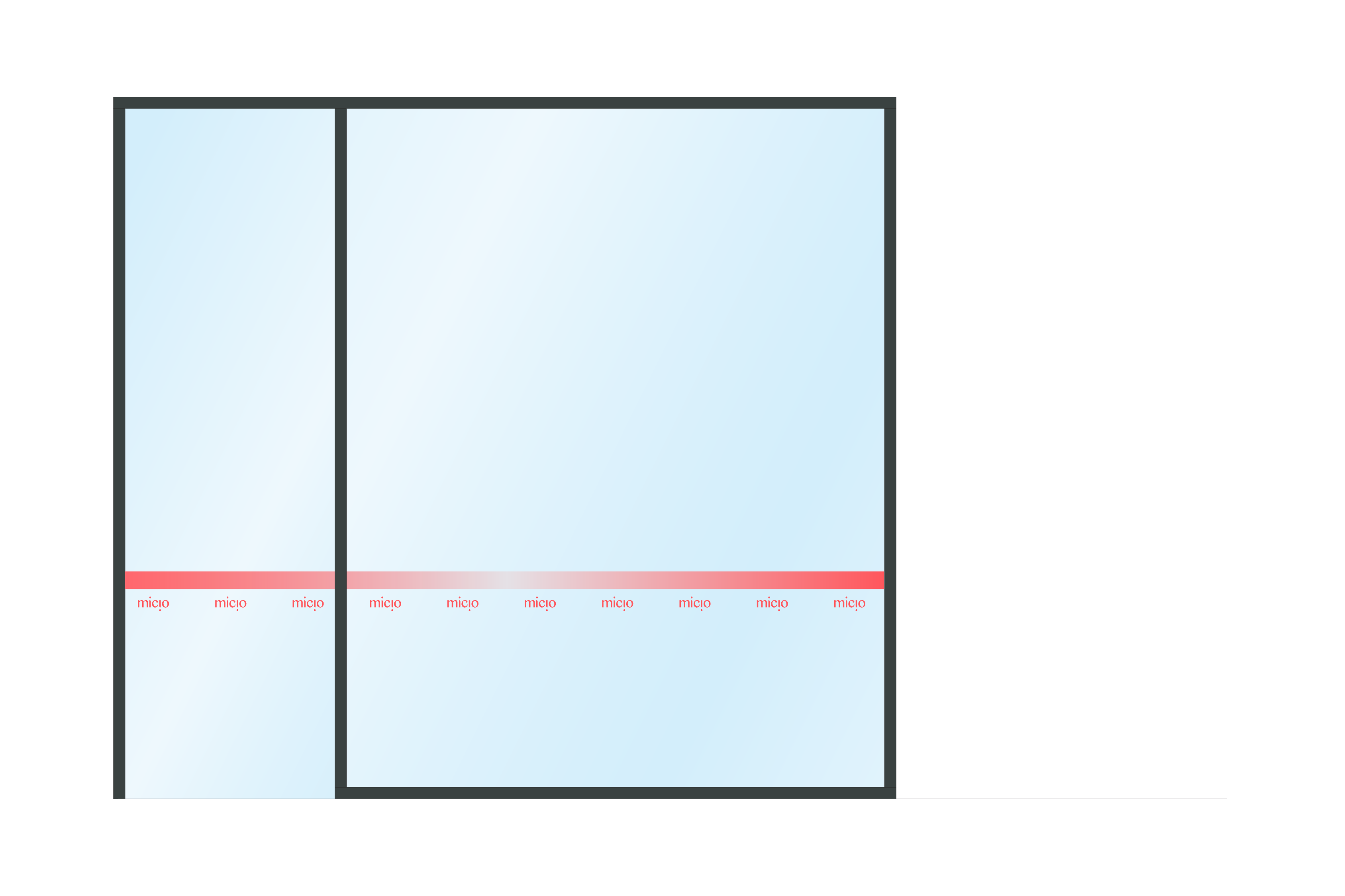AS 1428.1-2021:
WHAT IT MEANS FOR VISION STRIPS
MAY 2024

What is a vision strip?
A vision strip, or visual indicator strip, is a safety feature installed on glass surfaces to enhance visibility and prevent accidental collisions or injuries. Typically made of vinyl, these strips are strategically placed on glass surfaces in contrasting colours to the surrounding environment.
They aim to promote spatial awareness and ensure safety in areas with glass partitions or doors.
Rules of applying vision strips
Under Australian Standards AS 1428.1-2021 – Design for Access and Mobility,
“Where there is no chair rail, handrail or transom, all frameless or fully glazed doors, sidelights, including any glazing capable of being mistaken for a doorway or opening, shall be clearly marked for their full width with an unbroken, solid and opaque contrasting line.”
When considering the installation of vision strips, it is crucial to adhere to relevant guidelines and rules to ensure compliance:
1. The strip must be unbroken, solid, and opaque, spanning the entire glass width.
2. This strip should be at least 75 mm high and positioned with its lower edge between 900 mm and 1,000 mm above the finished floor level.
3. The strip must provide a minimum of 30% luminance contrast when viewed against the floor or nearby surfaces within 2 metres on the opposite side of the glass. The contrast shall be achieved when viewed from each side of the glazing.
4. On tinted glass, the contrast of the strip may be better evaluated against the glass tint rather than the floor beyond.
5. Logos, branding, company names, or similar markings can be added to the vision strip, but these should be either entirely above or entirely below the minimum 75 mm high contrasting strip.
Following these standards is crucial for safety and compliance, and failure to adhere to them can result in severe penalties.
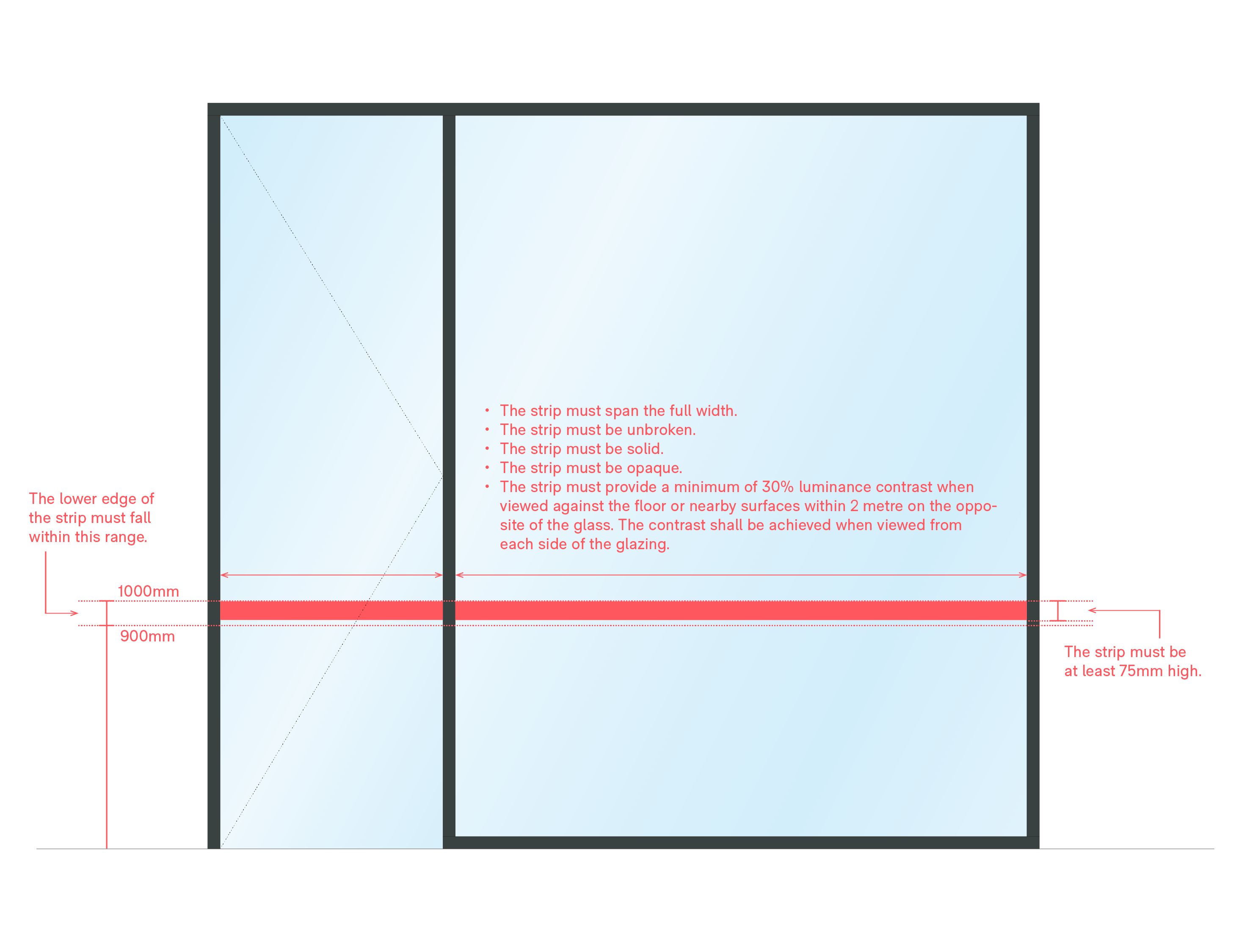
Comparative differences between AS 1428.1-2009 and AS 1428.1-2021
Description of the Contrasting Strip
- 2009 Version: The strip must be solid and non-transparent.
- 2021 Version: The strip must be unbroken, solid, and opaque.
Contrast viewing specification
- 2009 Version: Not specified.
- 2021 Version: The contrast must be achieved from both sides of the glazing.
Opacity Testing
- 2009 Version: Not specified.
- 2021 Version: The opacity of the strip must be tested by placing a solid object immediately behind and touching the glass. The strip is considered opaque if no image of the object is visible.
Consideration for Tinted Glass
- 2009 Version: Not specified.
- 2021 Version: The contrast of the strip may be better evaluated against the glass tint rather than the floor beyond.
Additional Markings
- 2009 Version: Not specified.
- 2021 Version: Logos, branding, company names, or similar markings can be added to the vision strip, but these should be either entirely above or entirely below the minimum 75 mm high strip.
Reference to Further Information
- 2009 Version: Not specified.
- 2021 Version: References AS 1288:2006 Section 5 for more information on criteria and situations related to glazing that is more vulnerable to human impact.

Design Considerations for Vision Strips
While adherence to the AS 1428.1-2021 standard is compulsory under the Building Code of Australia (BCA) for the implementation of vision strips, there is flexibility in adjusting elements such as size, colour and design to harmonise with the overall aesthetics and functionality of a space, provided that the fundamental accessibility and safety requirements prescribed by the standard are maintained.
Strip Colour
While the standard provides guidelines for selecting opaque colours and achieving a minimum of 30% luminance contrast against surrounding surfaces, designers can choose colours that complement the overall design scheme. Acceptable colours can include single colours, alternating colours, or gradient or ombre effects. However, testing each section to ensure it meets the luminance contrast and opacity requirements is essential before finalising a multi-colour design.
Strip Size
A visibility strip must be at least 75 mm high and extend across the entire width of the glazed window or door. Common sizes include 75 mm, 100 mm, and 110 mm, but these are not mandatory, allowing for flexibility in your choice.
Strip Design
With the update from AS 1428.1-2009 to AS 1428.1-2021, the flexibility for creativity around branded vision strips has decreased slightly. Logos, branding, company names, or similar elements may be added to the vision strip but must be placed entirely above or below the minimum 75 mm wide strip. However, as long as the design meets the standard's guidelines, vision strips can still be tailored to match your branding or signage style guide.
By strategically considering the above factors, a well-designed branded vision strip can become a powerful branding tool that seamlessly blends with your building's aesthetics, adding to its overall look while maintaining safety and compliance.
Examples of Vision Strips Designs
FAQs
Q: What are other names for vision strips?
A: Vision strips are also known as glazing bands, glass safety marking decals, decal strips, safety visual glazing strips, visual indicators, and visibility strips.
Q: Should I buy pre-made vision strips or engage experienced signage consultants?
A: Pre-made vision strips can be sufficient if the primary goal is essential compliance.
However, engaging experienced signage consultants is highly recommended. Experts possess a comprehensive grasp of current standards and can work efficiently with Building Surveyors and DDA Consultants.
Additionally, signage designers can integrate your brand's visual characteristics into the vision strips, ensuring they blend seamlessly with other signage, such as wayfinding and statutory signs, enhancing your space's overall aesthetics and functionality.
Q: What are the consequences of not having vision strips?
A: Failing to install vision strips can lead to accidents and injuries and may result in non-compliance with safety regulations. This non-compliance can have severe legal and financial repercussions, including fines and injury liability.
Q: How can I test the luminance contrast of my vision strips?
A: Luminance contrast can be tested using specialised tools and methods to meet the minimum 30% requirement. It's advisable to refer to AS 1428.1-2021 for detailed guidelines or consult a professional for accurate testing.
If you have any questions about vision strips or want to explore ways to enhance your branded space, we would love to hear from you.



